Mid-century modern dining rooms represent the perfect fusion of functionality and artistic expression, capturing the innovative spirit of the 1940s-1960s design era. These spaces showcase clean lines, organic forms, and a seamless blend of natural and synthetic materials that create timelessly elegant environments. From rich walnut tables paired with sculptural lighting to open-concept layouts featuring built-in banquettes, mid-century dining rooms emphasize both form and function. The style embraces bold geometric patterns, warm wood tones, and strategic pops of color while maintaining the minimalist philosophy of "less is more." These designs continue to inspire contemporary interiors with their sophisticated simplicity and enduring appeal.
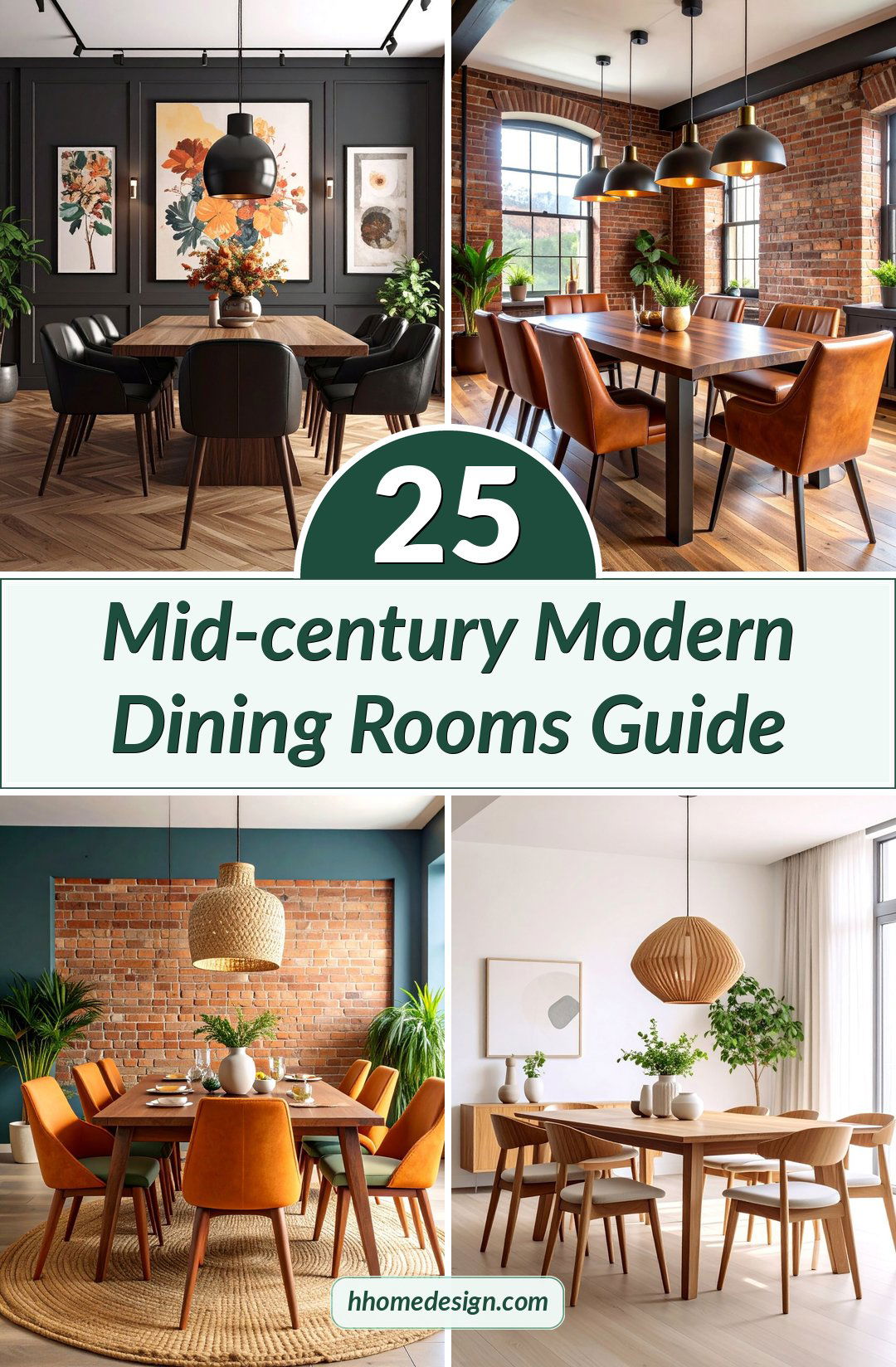
1. Classic Walnut Dining Room with Sputnik Chandelier
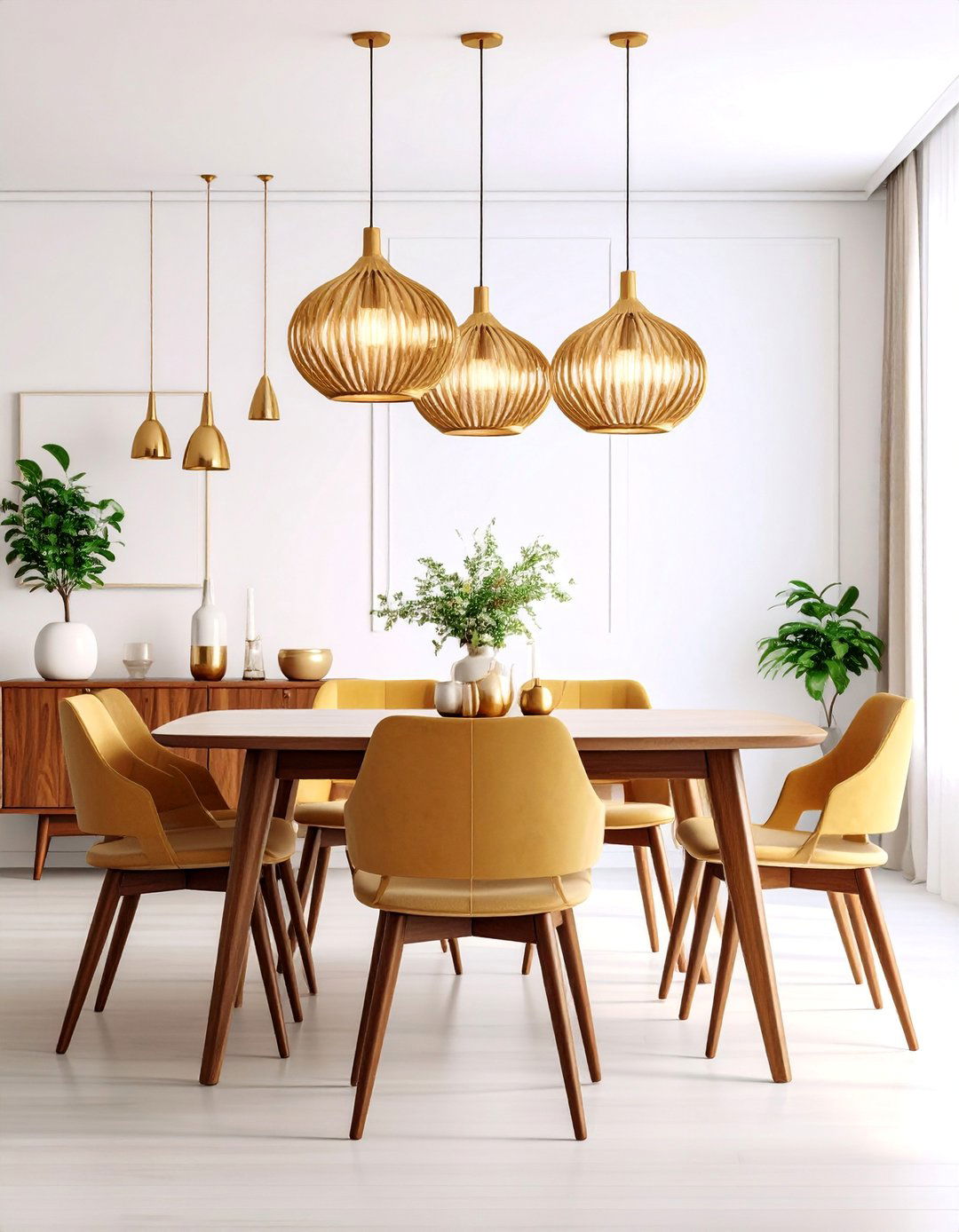
This timeless mid-century dining room centers around a rich walnut dining table with tapered legs, complemented by matching credenza storage along one wall. The iconic sputnik chandelier serves as the room's dramatic focal point, with multiple brass arms extending from a central sphere to create stunning light patterns. Wishbone chairs in natural oak provide comfortable seating while maintaining the period's signature aesthetic. Warm brass accents appear throughout the hardware and light fixtures, creating cohesive metallic elements. The color palette features deep walnut tones against crisp white walls, with subtle geometric artwork adding visual interest without overwhelming the space's clean lines.
2. Open Concept Dining Area with Floating Credenza

Seamlessly integrated into an open floor plan, this dining space features a sleek floating credenza that appears to hover along the wall, creating an airy, uncluttered feel. The oval teak dining table accommodates family gatherings while maintaining visual lightness through its pedestal base design. Molded plastic chairs in vibrant orange provide bold color contrast against the neutral backdrop. Floor-to-ceiling windows flood the space with natural light, eliminating the need for heavy window treatments. The room flows effortlessly into adjacent living areas, with consistent flooring and a neutral color scheme creating visual continuity throughout the home's interconnected spaces.
3. Banquette Seating Breakfast Nook Design
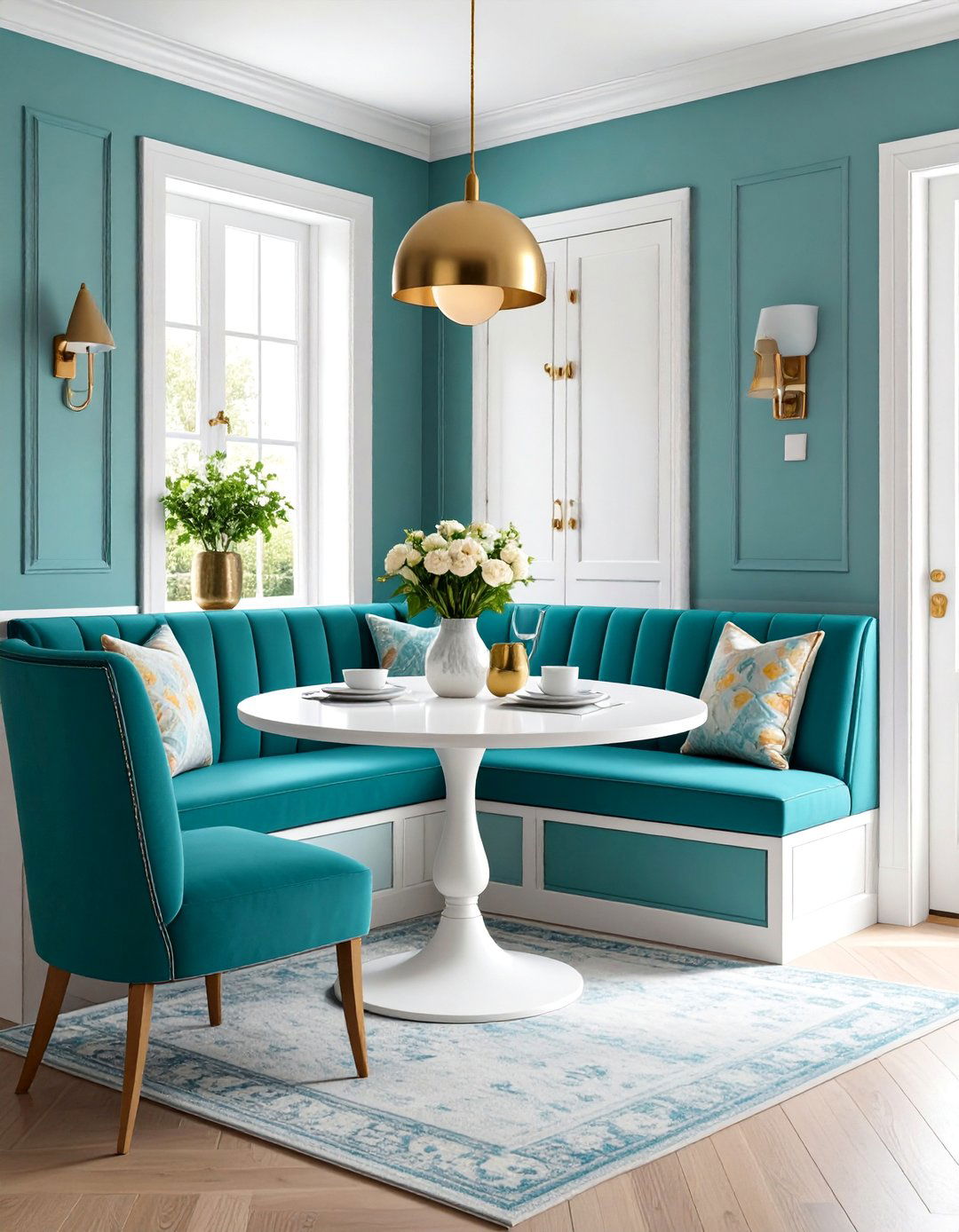
Built-in L-shaped banquette seating maximizes space efficiency while providing comfortable dining for everyday meals and casual entertaining. The upholstered bench features deep teal vinyl that's both stylish and practical for easy cleaning. A round tulip table with white laminate top creates perfect proportions for the intimate seating arrangement. Brass pendant lights hang at varying heights, adding visual rhythm and adequate task lighting. Built-in storage beneath the banquette keeps dining linens and seasonal items organized. Large picture windows behind the seating area frame outdoor views while flooding the compact space with natural light, making the breakfast nook feel larger and more connected to nature.
4. Scandinavian-Inspired Dining Room with Natural Woods

Light-toned woods dominate this Nordic-influenced mid-century dining space, featuring a blonde oak table paired with bentwood chairs in matching finish. The room embraces the Scandinavian concept of hygge through soft textiles and warm lighting. A simple pendant light with white fabric shade provides gentle illumination without competing with the room's minimalist aesthetic. Natural fiber area rugs add warmth and texture underfoot. The color palette consists entirely of neutral tones - whites, creams, and natural wood finishes - creating a serene, uncluttered environment. Built-in shelving displays carefully curated ceramics and glassware, maintaining the room's emphasis on functional simplicity and organic materials.
5. Bold Color Block Dining Room with Geometric Patterns
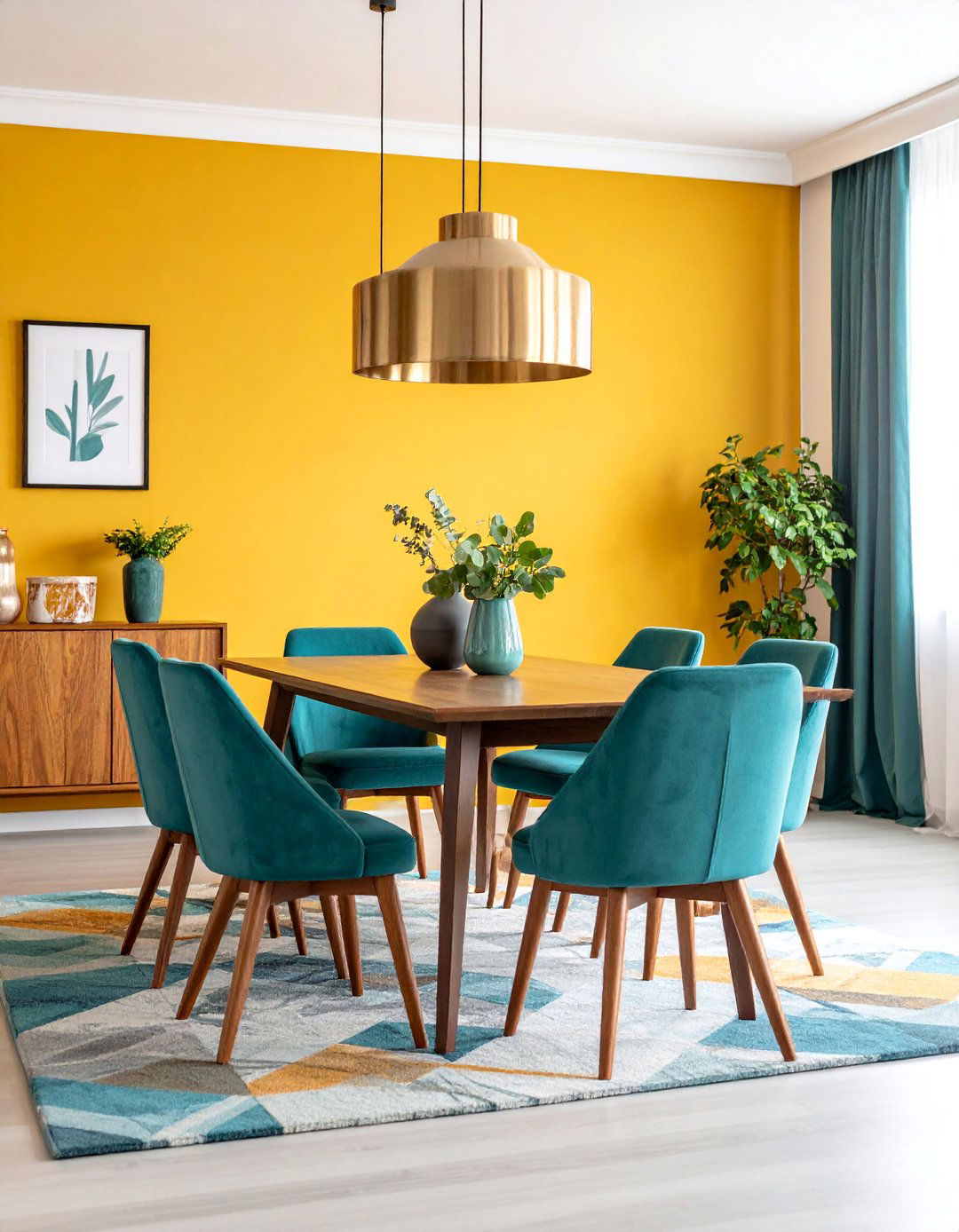
Vibrant mustard yellow walls create a striking backdrop for this energetic mid-century dining space. The rectangular teak table features distinctive grain patterns that complement the room's warm color scheme. Upholstered dining chairs in deep teal create bold contrast while maintaining period authenticity. Geometric area rugs featuring interlocking patterns add visual complexity without overwhelming the space. A brass pendant light with cylindrical shade provides focused lighting over the dining surface. Abstract artwork in coordinating colors adorns the walls, reinforcing the room's commitment to bold mid-century aesthetics. The combination of warm and cool tones creates dynamic visual interest while remaining true to the era's design principles.
6. Gallery Wall Dining Room with Vintage Art Collection
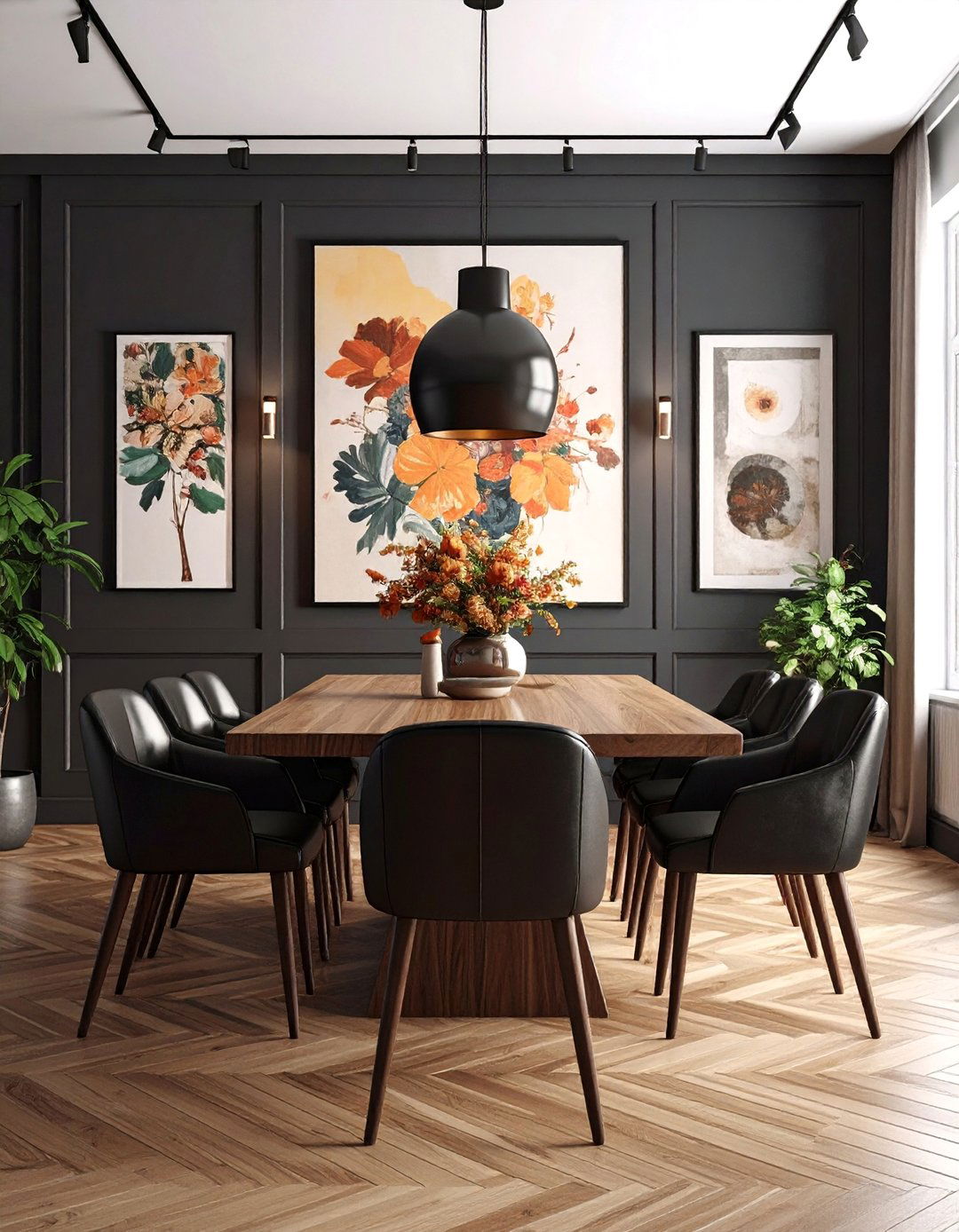
An impressive gallery wall featuring abstract paintings and vintage prints transforms one dining room wall into a curated art exhibition. The collection includes works reminiscent of mid-century masters, with bold geometric shapes and vibrant color palettes. A simple walnut dining table allows the artwork to command attention without competition. Black leather dining chairs provide sophisticated seating that doesn't detract from the visual impact of the gallery wall. Track lighting with adjustable spotlights illuminates individual artworks while providing ambient room lighting. The remaining walls stay neutral white, creating a museum-like backdrop that enhances the art collection's visual impact and maintains the room's sophisticated aesthetic.
7. Two-Tone Kitchen Dining Integration
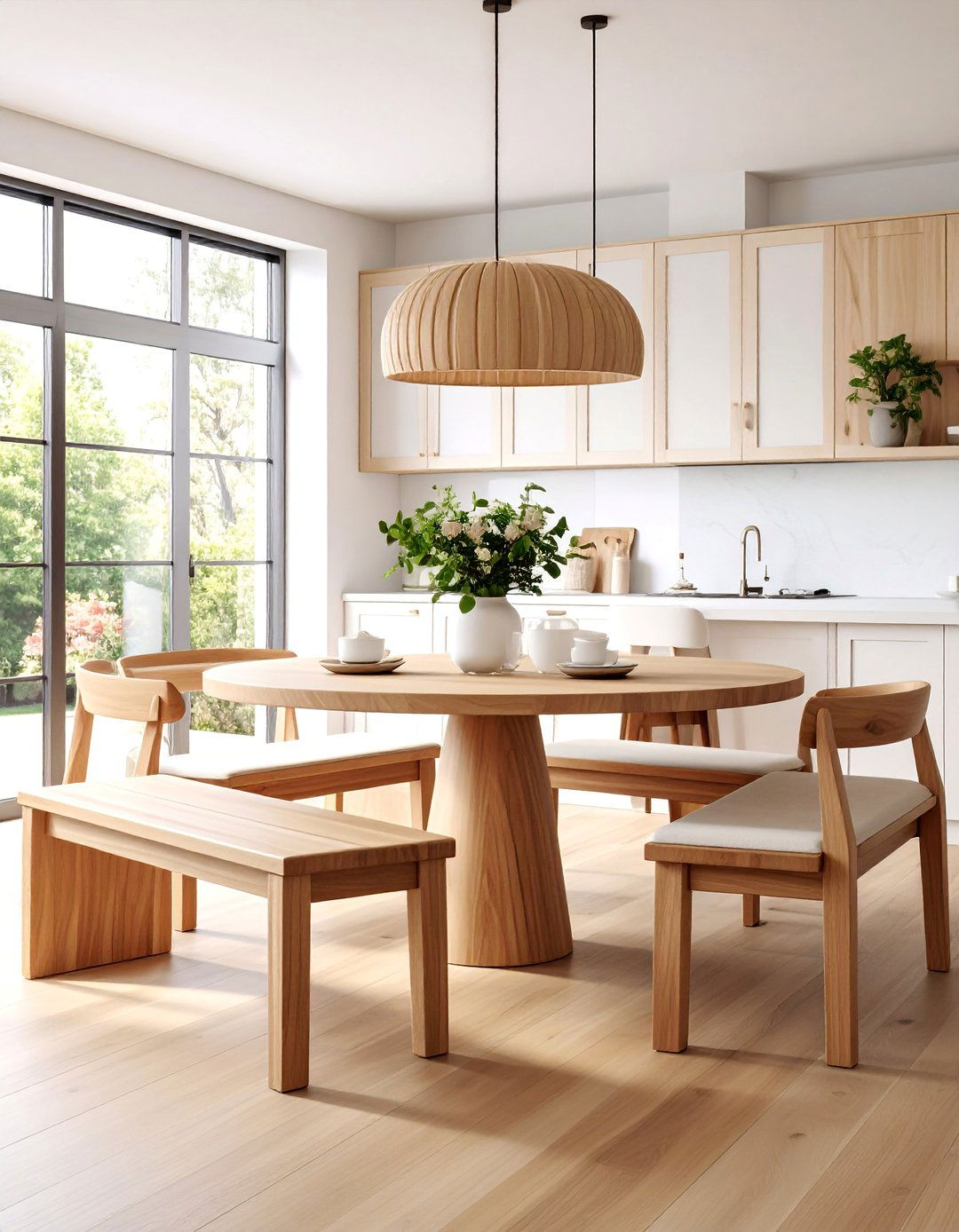
This dining area seamlessly integrates with kitchen cabinetry through a coordinated two-tone color scheme featuring natural walnut and crisp white surfaces. Built-in bench seating with walnut base and white upholstered cushions provides space-efficient dining. The round pedestal table echoes the kitchen's color palette with its white base and walnut top. Pendant lights in brushed brass coordinate with kitchen hardware, creating visual continuity throughout the combined space. Open shelving displays mid-century dinnerware and glassware, adding both storage and decorative elements. The design maximizes functionality in smaller homes while maintaining the clean, uncluttered aesthetic that defines mid-century modern style.
8. Sunken Conversation Pit Dining Lounge

This innovative dining concept features a slightly sunken seating area with built-in banquette seating arranged around a low, coffee table-height dining surface. Plush cushions in burnt orange upholstery create a lounge-like atmosphere perfect for casual dining and extended conversations. The lowered floor level defines the dining space within a larger open-plan room. Overhead, a striking geometric light fixture provides both ambient and task lighting. The design encourages relaxed, informal dining experiences while maintaining sophisticated mid-century aesthetics. Built-in planters with tropical plants add natural elements and create visual boundaries. This unconventional approach to dining room design reflects the era's experimental spirit and casual lifestyle philosophy.
9. Floor-to-Ceiling Window Wall Dining

Expansive floor-to-ceiling windows create a dramatic backdrop for this light-filled dining room, virtually eliminating the boundary between indoor and outdoor spaces. The simple rectangular dining table in rich teak doesn't compete with the spectacular natural views beyond. Minimal window treatments preserve unobstructed sightlines while allowing maximum natural light penetration. Sleek dining chairs with thin metal frames maintain visual lightness to preserve the room's airy feeling. A single pendant light provides evening illumination without interfering with daytime views. The restrained furniture selection and neutral color palette ensure that nature's changing seasons become the room's primary decorative element, embodying mid-century modern's connection to the natural world.
10. Mixed Materials Dining Room with Industrial Touches

This sophisticated dining space combines classic mid-century warmth with subtle industrial elements through careful material selection. The dining table features a thick walnut top supported by sleek black metal legs, creating visual contrast and structural interest. Upholstered chairs in cognac leather add richness and comfort while maintaining clean lines. Exposed brick accent wall provides textural contrast against smooth surfaces elsewhere in the room. A brass and black pendant light fixture bridges the gap between warm and cool materials. The combination of organic wood, refined metal, and tactile brick creates a multi-layered design that feels both sophisticated and approachable, perfect for contemporary living.
11. Monochromatic White Dining Room with Natural Accents

Pure white walls, ceiling, and built-in storage create a gallery-like backdrop that emphasizes architectural form over decorative elements. The blonde wood dining table and chairs provide the only color contrast, their natural grain patterns becoming sculptural focal points. White ceramic dinnerware and glassware maintain the monochromatic scheme while adding functional beauty. A simple white pendant light preserves the room's ethereal quality while providing necessary illumination. Subtle texture variations in white textiles and finishes prevent the space from feeling sterile. This restrained approach exemplifies mid-century modern's emphasis on proportion, form, and material quality over ornamental decoration, creating a serene dining environment focused on pure architectural beauty.
12. Corner Dining Nook with Built-in Storage
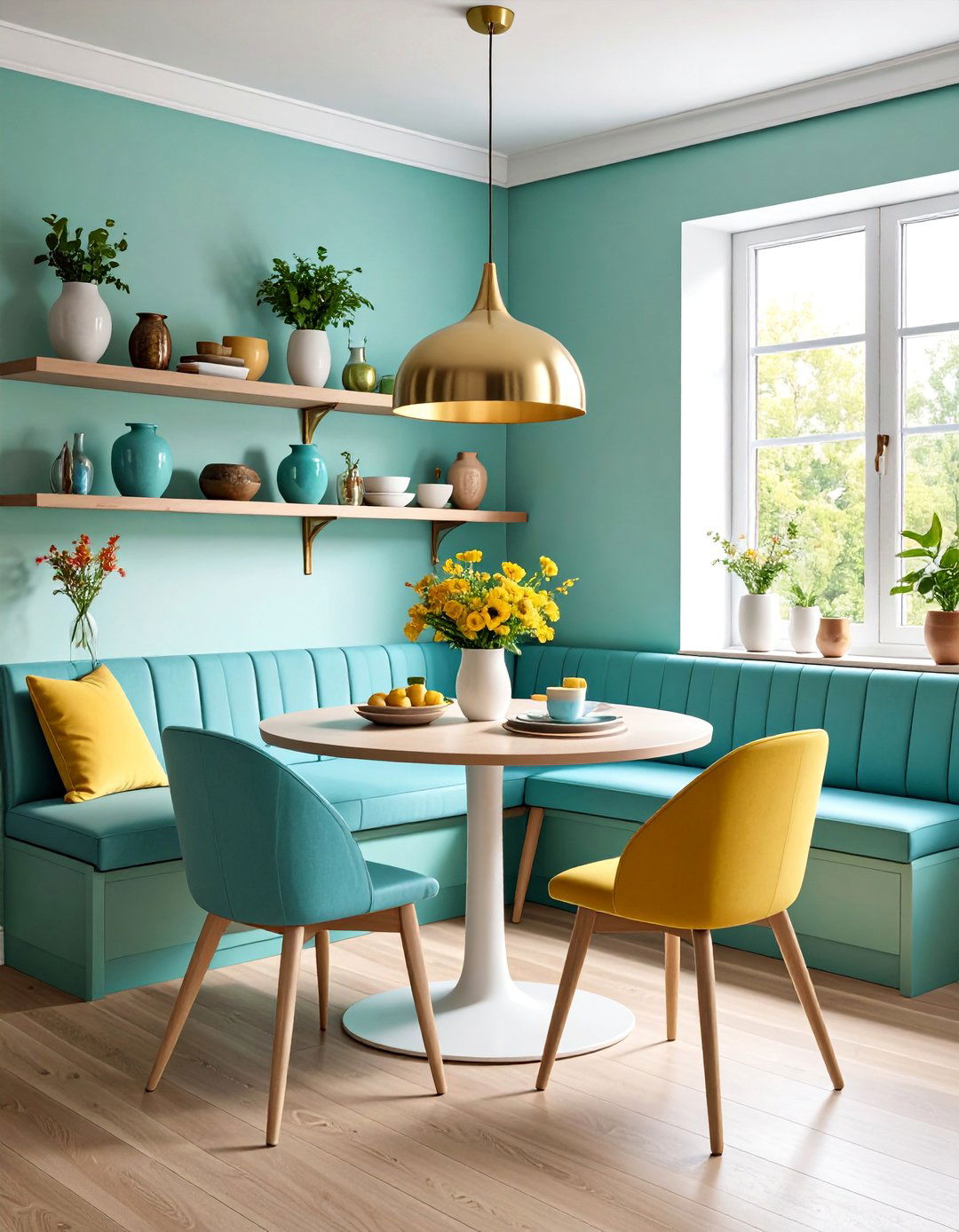
Maximizing space efficiency, this corner dining arrangement features an L-shaped built-in banquette with hidden storage beneath the seating. The compact round table accommodates intimate meals while preserving floor space in smaller homes. Above the seating, floating shelves display mid-century ceramics and serve as functional storage for everyday items. A single pendant light with brass finish provides focused illumination over the table surface. The built-in design creates a cozy, café-like atmosphere while maximizing functionality. Upholstery in durable vinyl allows for easy maintenance in this high-use area. This solution demonstrates mid-century modern's problem-solving approach to design, creating beautiful, functional spaces regardless of size constraints.
13. Dramatic Black Accent Wall Dining Room
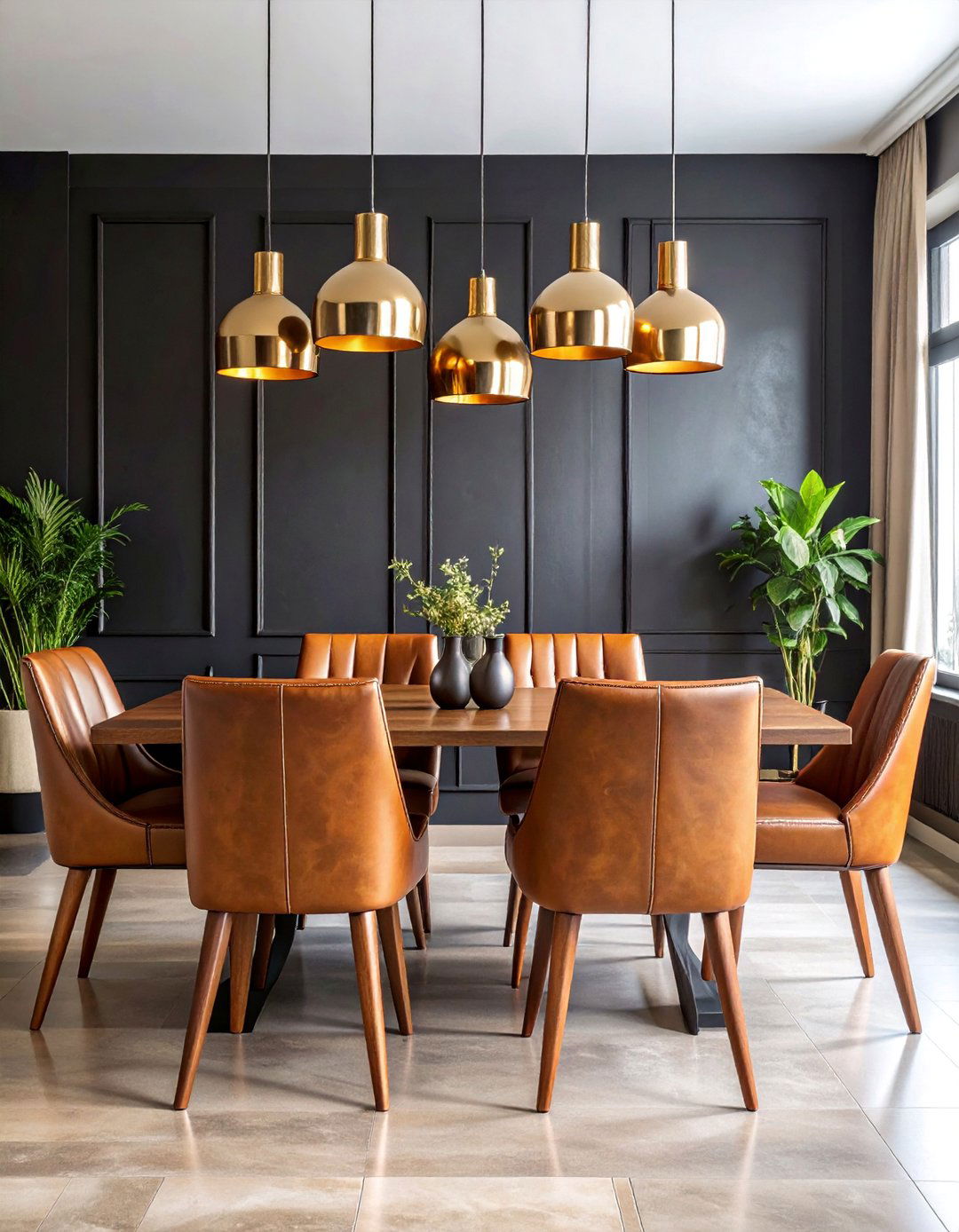
A striking black accent wall creates bold contrast against white surrounding surfaces, serving as a sophisticated backdrop for the dining area. The dark wall features subtle texture that adds depth without overwhelming the space. A sleek walnut dining table and cognac leather chairs provide warm contrast against the dramatic backdrop. Brass pendant lights create warm pools of light while their metallic finish adds glamorous accents. The monochromatic base allows colorful artwork and accessories to make strong visual statements. This high-contrast approach demonstrates mid-century modern's embrace of bold design choices while maintaining the style's fundamental emphasis on clean lines and uncluttered spaces.
14. Organic Curved Furniture Dining Suite

Embracing mid-century modern's love of organic forms, this dining room features furniture with flowing, curved lines that soften the space's overall geometry. The oval dining table with kidney-shaped edges creates intimate seating arrangements. Upholstered chairs with curved backs and seats provide exceptional comfort while maintaining sculptural beauty. A curved credenza follows the room's organic theme while providing essential storage. The pendant light features a flowing, asymmetrical design that complements the furniture's natural forms. Warm wood tones and neutral upholstery create a cohesive color palette that emphasizes the beauty of the curved forms. This approach showcases mid-century modern's sophisticated understanding of how organic shapes can create more humane, comfortable living spaces.
15. Retro Color Palette Dining Room

Bold retro colors define this energetic dining space, featuring walls in sage green paired with furniture in complementary warm tones. The rectangular teak dining table anchors seating upholstered in burnt orange and mustard yellow vinyl. These authentic mid-century colors create a vibrant, optimistic atmosphere characteristic of the era. Geometric patterns in the area rug echo the period's graphic design influences. Brass lighting fixtures and hardware provide metallic accents that unify the bold color scheme. Period-appropriate accessories, including ceramic planters and abstract sculptures, complete the authentic retro aesthetic. This approach demonstrates how mid-century modern design embraced color as a tool for creating memorable, personality-filled spaces that reflected the era's optimistic outlook.
16. Minimalist Dining Room with Statement Lighting
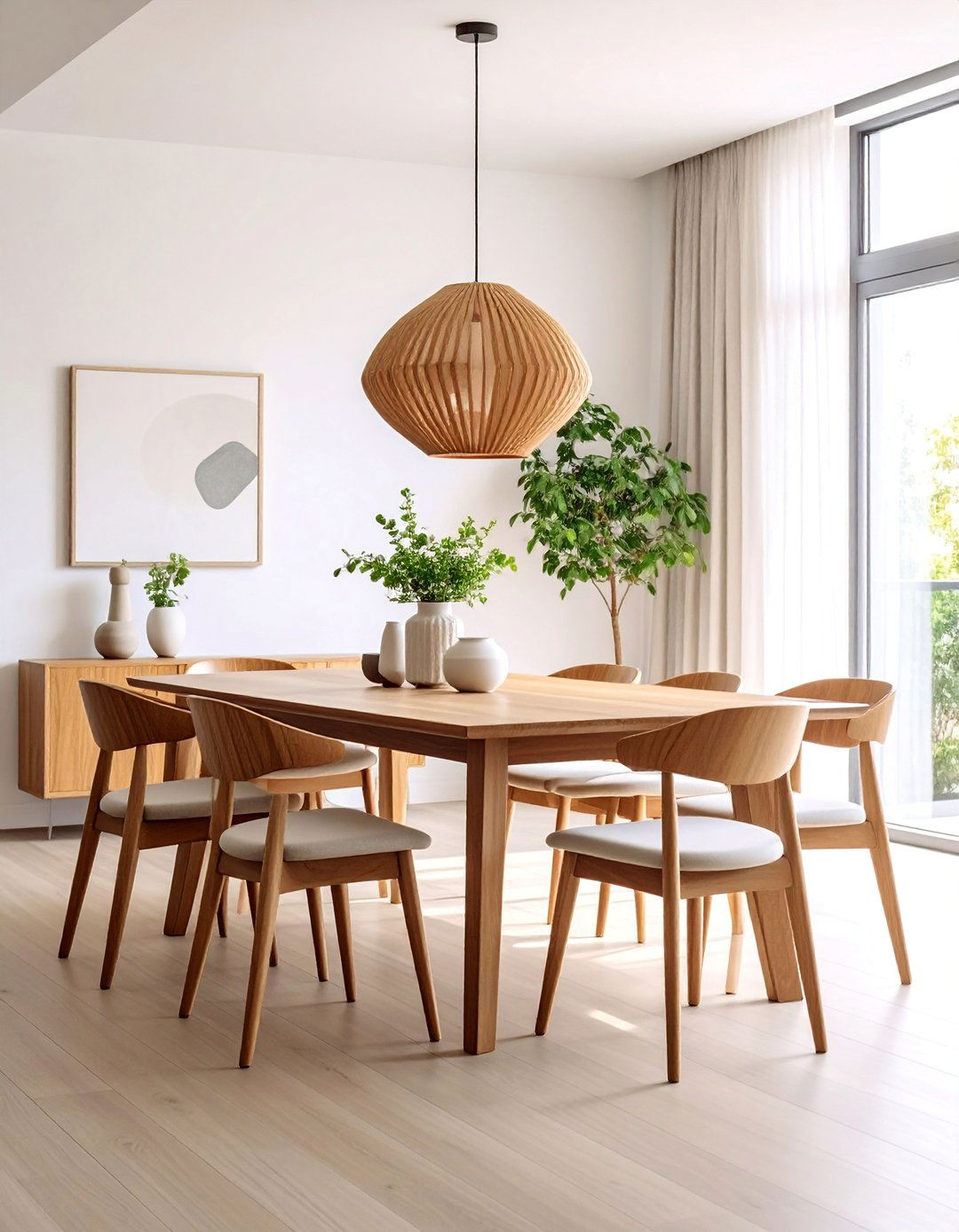
Stripped to essential elements, this minimalist dining space focuses attention on a single dramatic lighting fixture that serves as functional art. The simple rectangular table in natural walnut requires no additional decoration to create visual impact. Four identical chairs with clean lines maintain the room's uncluttered aesthetic. White walls and minimal accessories allow the architectural quality of the furniture and lighting to command attention. The oversized pendant light features geometric forms that cast interesting shadows, adding visual drama without cluttering the space. This restrained approach exemplifies mid-century modern's "less is more" philosophy, creating sophisticated beauty through careful editing and emphasis on quality over quantity.
17. Textural Contrast Dining Room Design
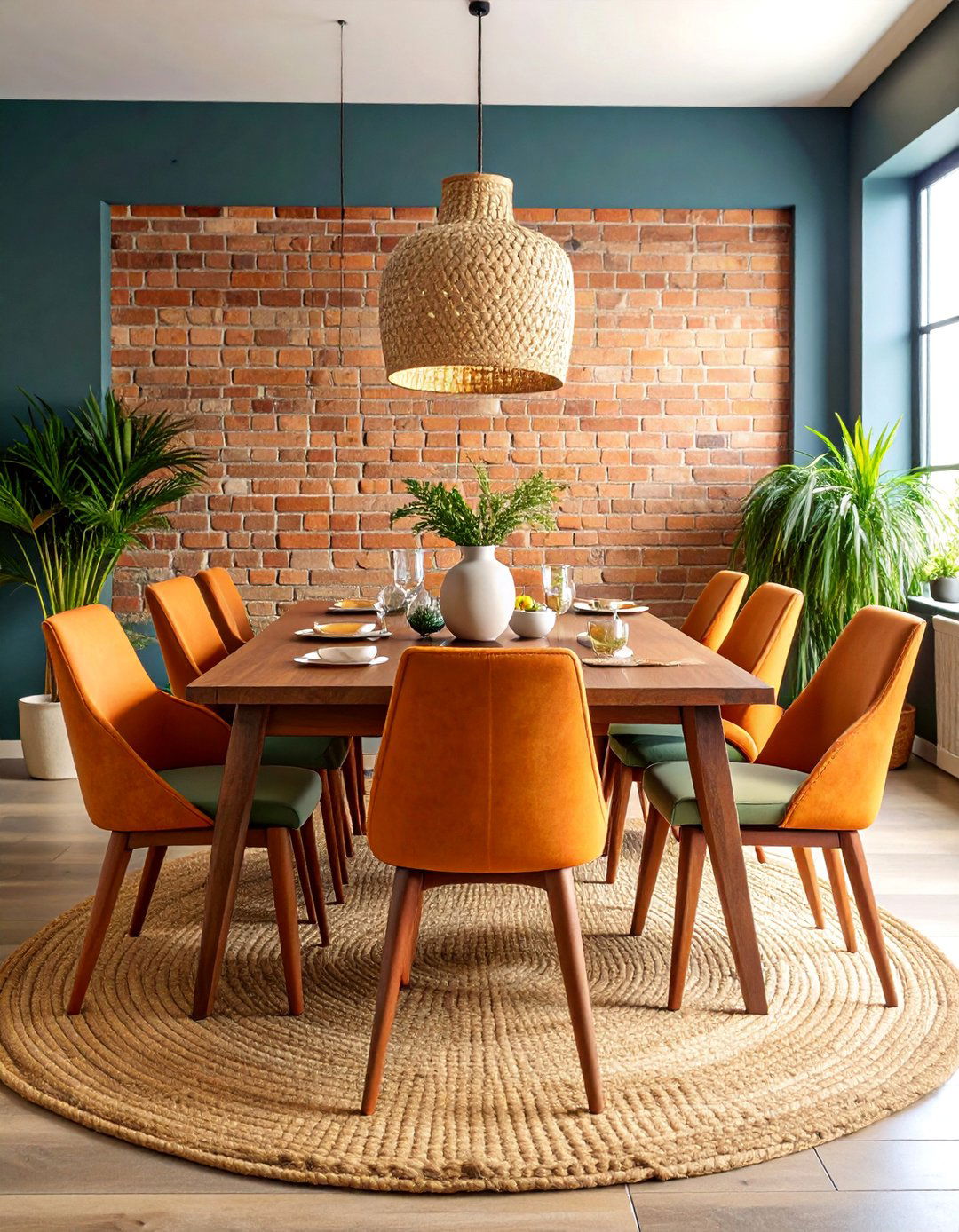
Various textures create visual interest in this sophisticated dining space without relying on color or pattern. The smooth walnut dining table contrasts with rough-woven upholstery on the dining chairs. A jute area rug adds natural texture underfoot, while smooth ceramic accessories provide refined contrast. The pendant light features a woven shade that introduces additional tactile interest. Exposed brick or stone accent wall adds architectural texture that complements the smooth surfaces elsewhere. This approach demonstrates mid-century modern's sophisticated use of material contrast to create visual complexity within a restrained color palette. The emphasis on texture over ornament reflects the style's appreciation for inherent material beauty and craftsmanship quality.
18. Mid-Century Modern Loft Dining Area
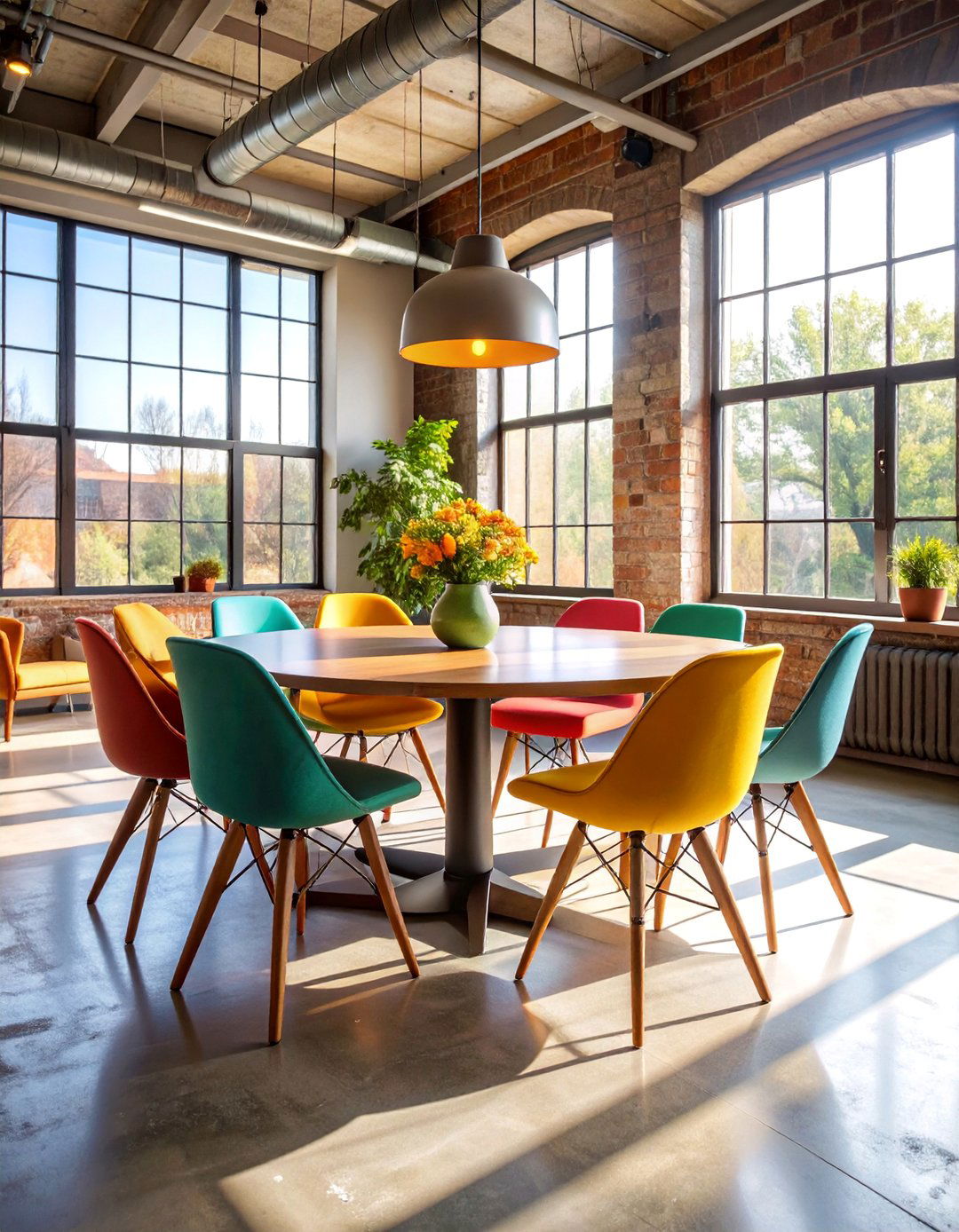
Open loft living requires dining furniture that looks beautiful from all angles, making this space perfect for showcasing mid-century modern's sculptural qualities. The round tulip table with its pedestal base creates visual lightness in the expansive space. Swivel chairs allow for easy conversation with adjacent living areas while maintaining design continuity. Industrial elements like exposed ductwork and concrete floors provide authentic loft character that complements mid-century modern's honest material aesthetic. Large factory-style windows flood the space with natural light while maintaining the industrial atmosphere. The furniture's clean lines and sculptural forms hold their own against the loft's dramatic architectural features, creating sophisticated urban living spaces.
19. Warm Wood Tone Dining Room with Brass Accents
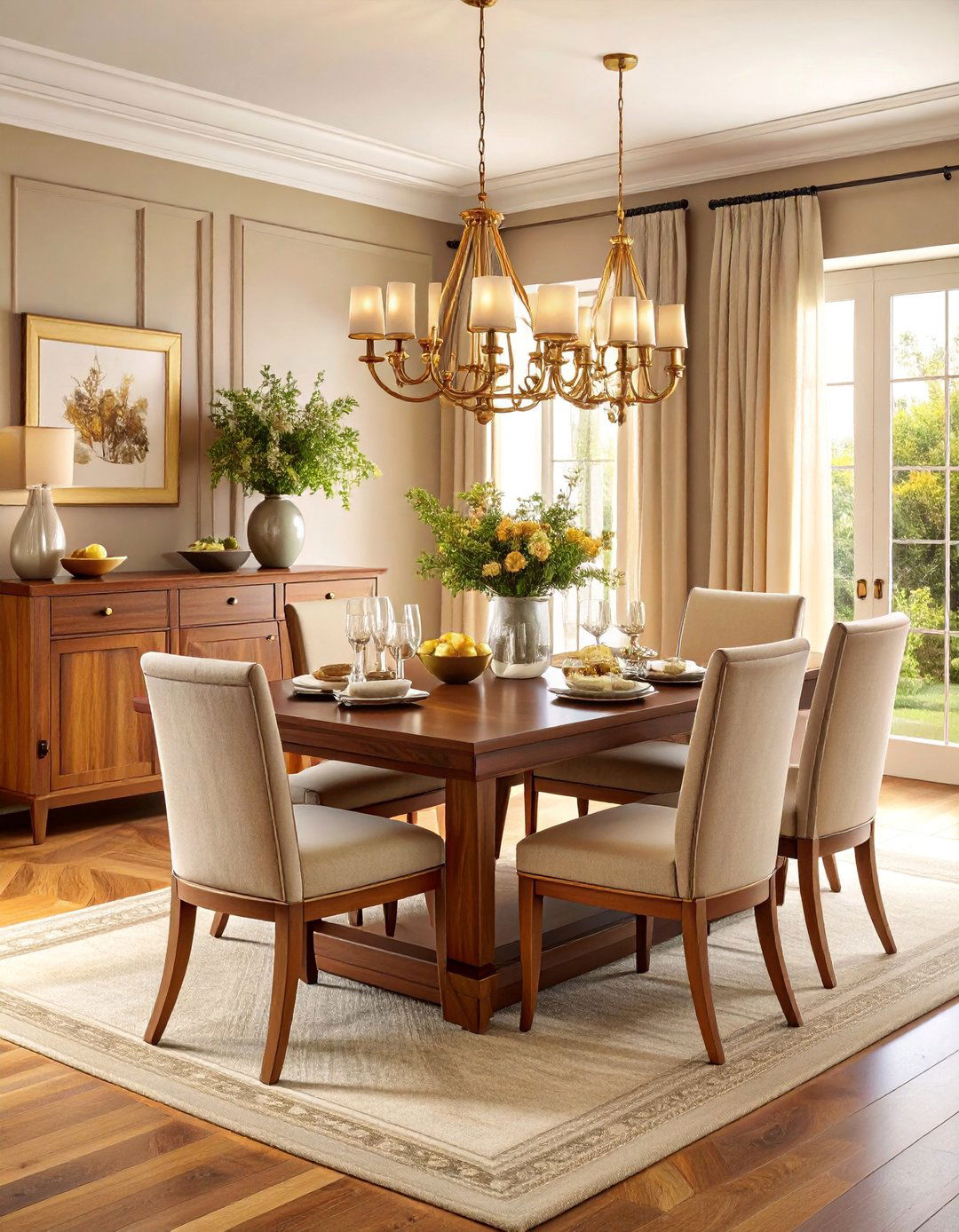
Rich, warm wood tones create an inviting atmosphere in this classic mid-century dining room. The walnut dining table features beautiful grain patterns that serve as natural decoration. Matching credenza and built-in shelving create visual continuity while providing necessary storage. Brass hardware, light fixtures, and decorative accessories add metallic warmth that complements the wood tones. Upholstered chairs in neutral linen provide comfortable seating without competing with the wood's natural beauty. The warm color palette creates a welcoming environment perfect for family meals and entertaining. This approach showcases mid-century modern's appreciation for natural materials and demonstrates how wood and brass create timeless combinations that age beautifully over decades.
20. Glass and Steel Dining Room Design

Clean lines and transparent materials create an ethereal dining space that emphasizes space and light over mass. The glass dining table with steel supports maintains visual lightness while providing functional dining surface. Steel-framed chairs with minimal upholstery continue the transparent aesthetic. Large windows eliminate visual barriers between indoor and outdoor spaces. The restrained material palette allows architectural features and natural light to dominate the space. Minimal accessories in glass and steel maintain design continuity without adding visual weight. This approach demonstrates mid-century modern's embrace of new materials and technologies to create spaces that feel both futuristic and timeless. The emphasis on transparency reflects the era's optimistic belief in progress and openness.
21. Dining Room with Integrated Plant Display
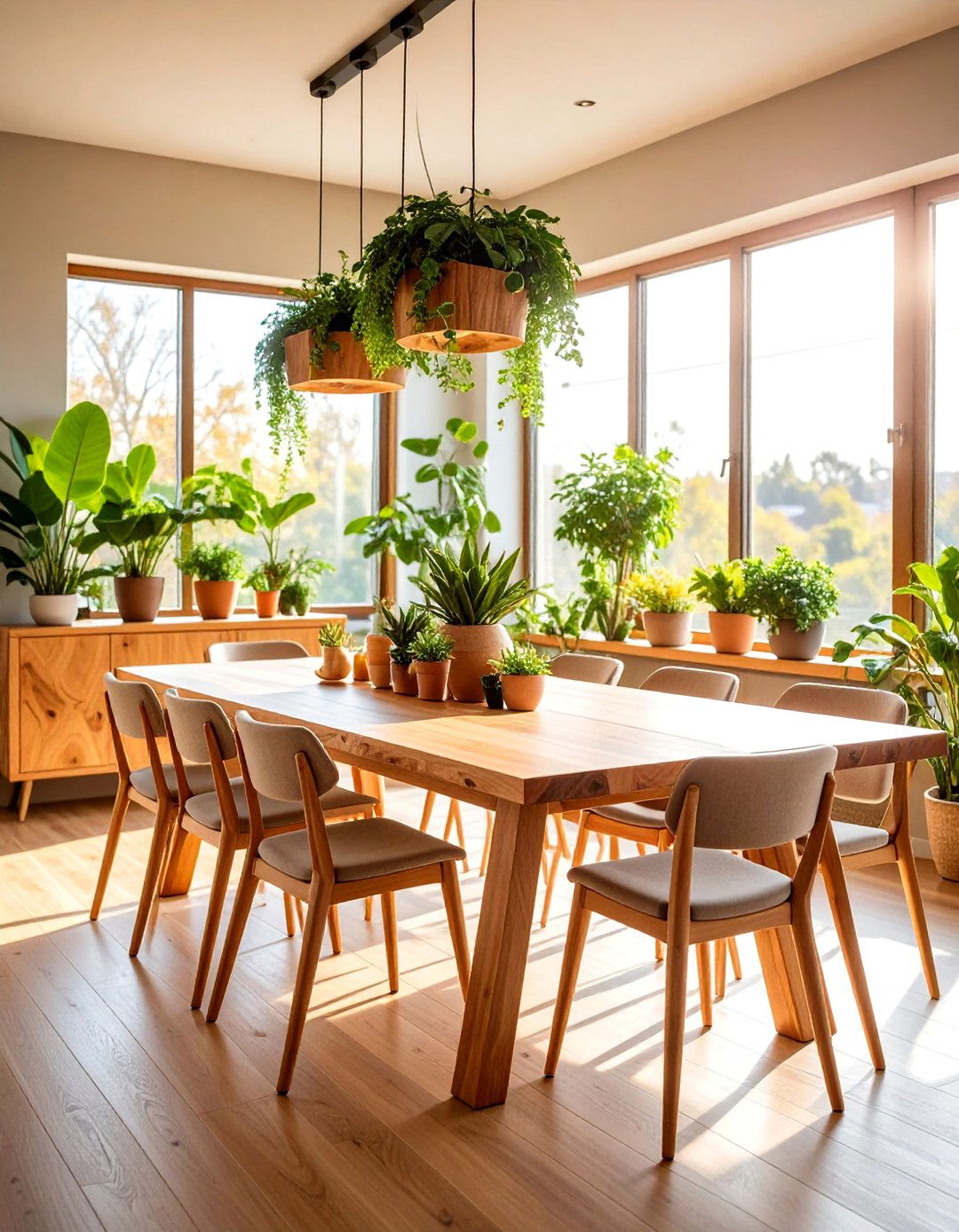
Living plants become integral design elements in this nature-inspired dining space, with built-in planters and display shelves creating an indoor garden atmosphere. The dining table features a live-edge wood slab that emphasizes natural forms and organic beauty. Planters at various heights create visual rhythm while improving air quality and connecting the space to nature. Large windows provide necessary light for plant health while creating beautiful interplay between indoor and outdoor greenery. Natural materials like wood, stone, and ceramic reinforce the organic theme. This biophilic approach reflects mid-century modern's emphasis on connecting interior spaces with the natural world, creating healthier, more harmonious living environments that benefit both physical and mental well-being.
22. Modular Dining Room Furniture System
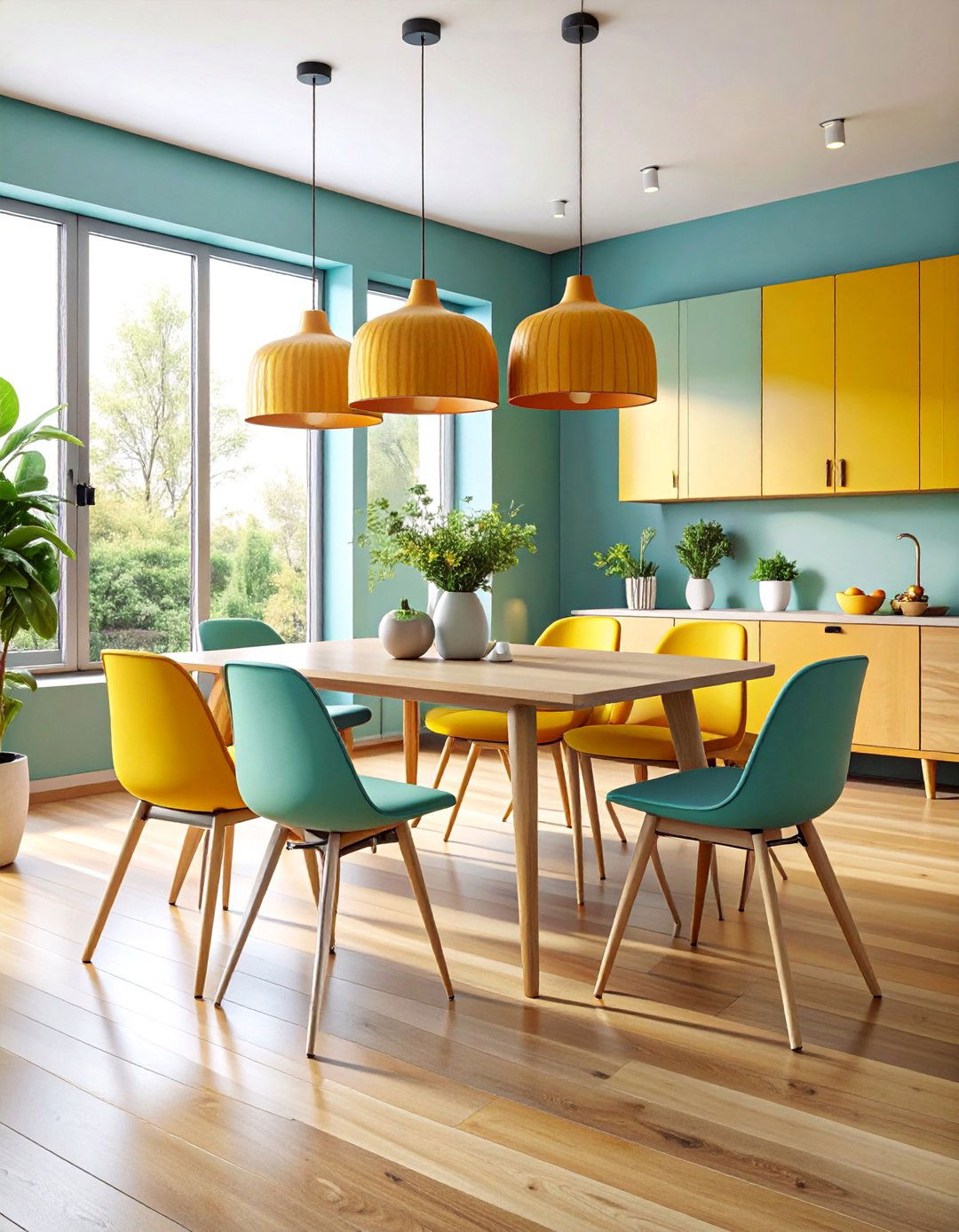
Flexible, modular furniture allows this dining space to adapt to changing needs and occasions. Stackable stools provide additional seating when needed, while a convertible table expands for larger gatherings. Built-in storage units can be reconfigured to accommodate different display and storage requirements. The modular approach reflects mid-century modern's problem-solving mentality and embrace of functional innovation. Clean lines and consistent materials unify the various components despite their flexibility. This systematic approach to furniture design demonstrates the era's belief that good design should adapt to life's changing demands while maintaining aesthetic coherence. The emphasis on modularity and flexibility continues to influence contemporary furniture design and urban living solutions.
23. High-Contrast Dining Room with Bold Patterns

Geometric patterns create visual excitement in this dynamic dining space without overwhelming the mid-century modern aesthetic. Black and white stripes, chevrons, or other graphic patterns appear in textiles, artwork, and accessories. The neutral base allows patterns to make strong statements while maintaining design sophistication. Furniture in solid colors provides visual rest between patterned elements. Strategic use of pattern creates focal points and adds personality without sacrificing the style's fundamental clarity. This approach demonstrates mid-century modern's sophisticated relationship with pattern and graphics, showing how bold design choices can enhance rather than compromise architectural beauty. The emphasis on graphic elements reflects the era's connection to contemporary art movements and commercial design innovations.
24. Intimate Dining Alcove with Curved Walls
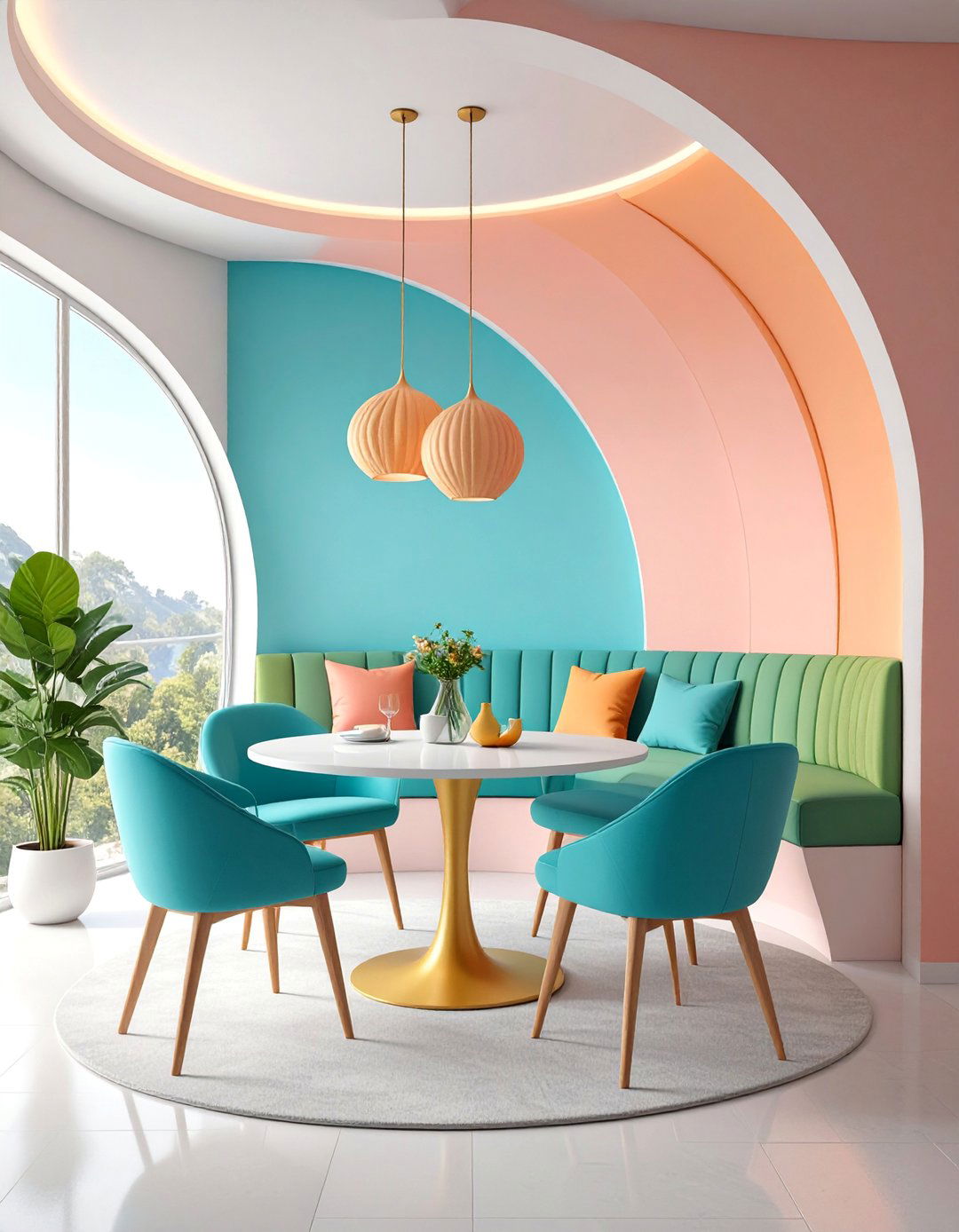
Soft, curved walls create an intimate dining alcove that feels separate from larger living spaces while maintaining visual connection. The curved architecture emphasizes mid-century modern's love of organic forms and flowing spaces. Built-in banquette seating follows the wall's curve, maximizing seating while maintaining the space's sculptural quality. A round table complements the curved architecture while facilitating intimate conversation. Soft lighting enhances the space's cozy atmosphere while highlighting the architectural features. This approach demonstrates mid-century modern's sophisticated use of architecture to create emotional and functional variety within open-plan homes. The curved forms create psychological comfort and acoustic privacy while maintaining the era's emphasis on spatial flow and connection.
25. Indoor-Outdoor Dining Pavilion Design
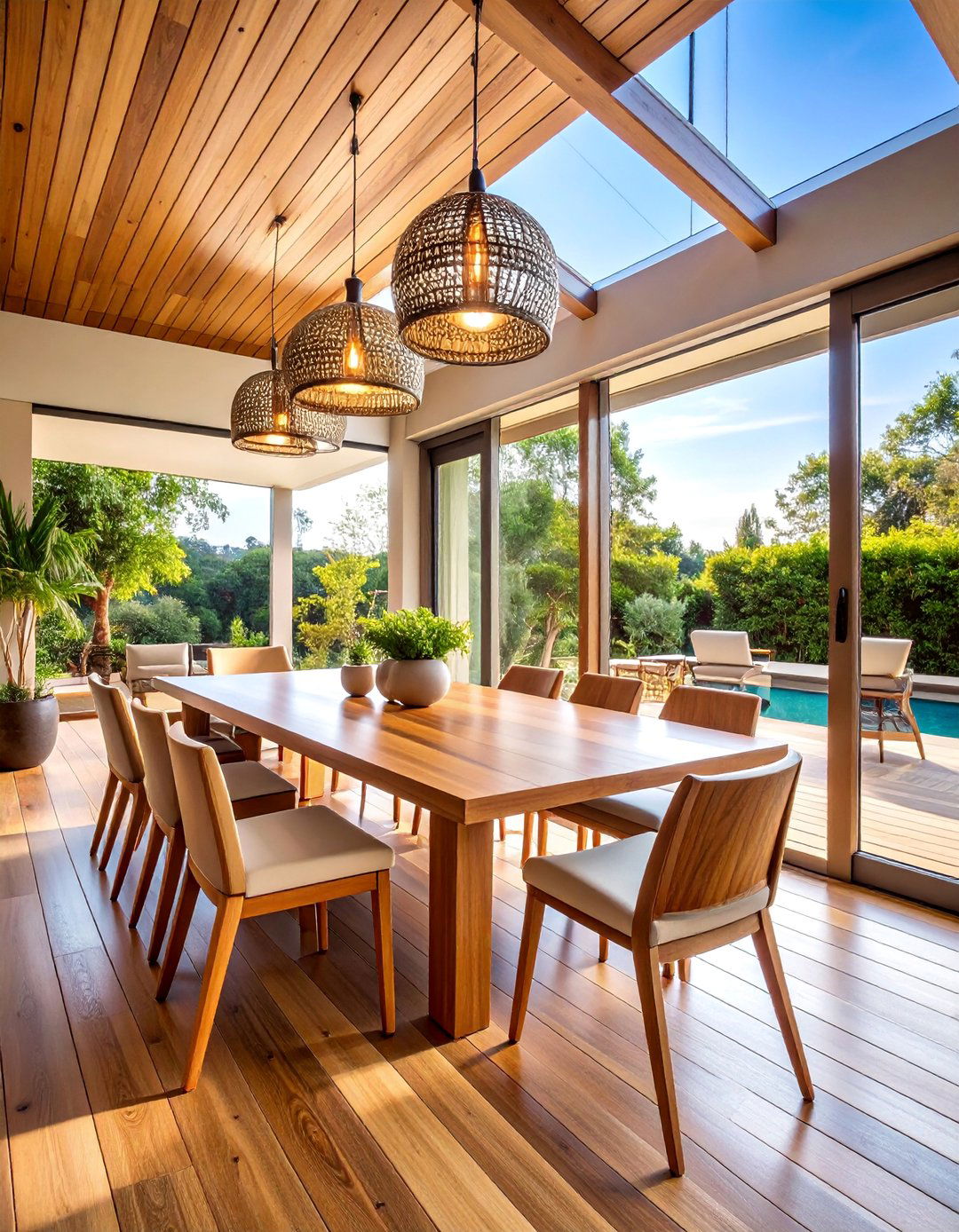
Large sliding glass doors dissolve the boundary between interior dining space and outdoor terrace, creating a seamless indoor-outdoor living experience. The dining table can serve both interior meals and alfresco dining depending on weather and occasion. Furniture selection emphasizes durability and weather-resistance without sacrificing mid-century modern style. Natural materials like teak and stone connect interior and exterior spaces. Overhead structures provide weather protection while maintaining open-air feeling. This design approach reflects mid-century modern's emphasis on climate-responsive architecture and outdoor living. The seamless transition between inside and outside spaces creates expanded living areas while emphasizing the connection to nature that defined the era's lifestyle philosophy and architectural innovations.
Conclusion:
Mid-century modern dining rooms continue to captivate homeowners with their timeless blend of functionality and artistic expression. These 25 design concepts demonstrate the style's remarkable versatility, from intimate breakfast nooks to dramatic open-concept spaces. The enduring appeal lies in the movement's core principles: clean lines, quality materials, and thoughtful integration of form and function. Whether featuring classic walnut furniture, bold geometric patterns, or innovative storage solutions, each approach honors the era's optimistic spirit while addressing contemporary living needs. These designs prove that mid-century modern dining rooms remain as relevant today as they were decades ago, offering sophisticated solutions for modern entertaining and daily life.


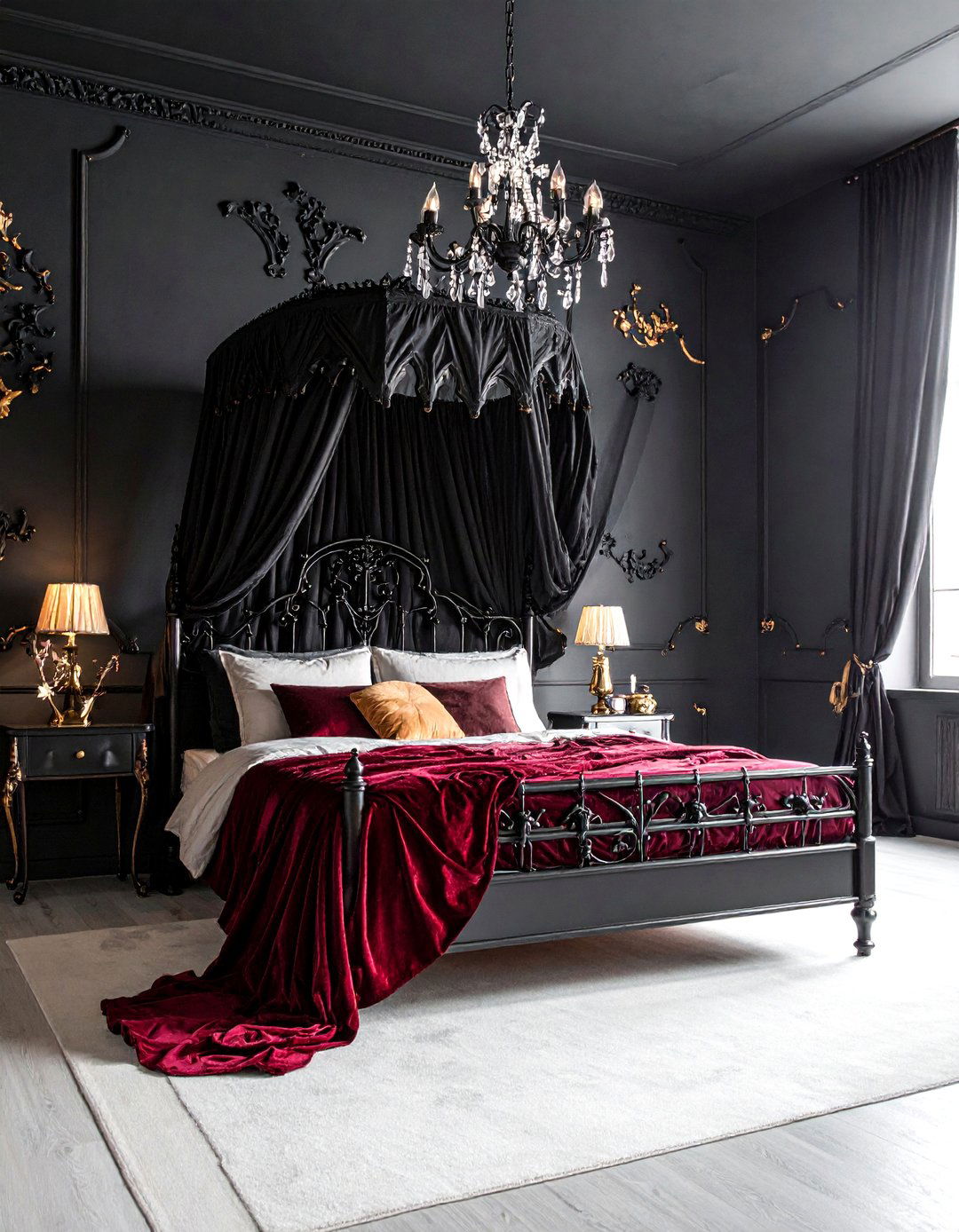
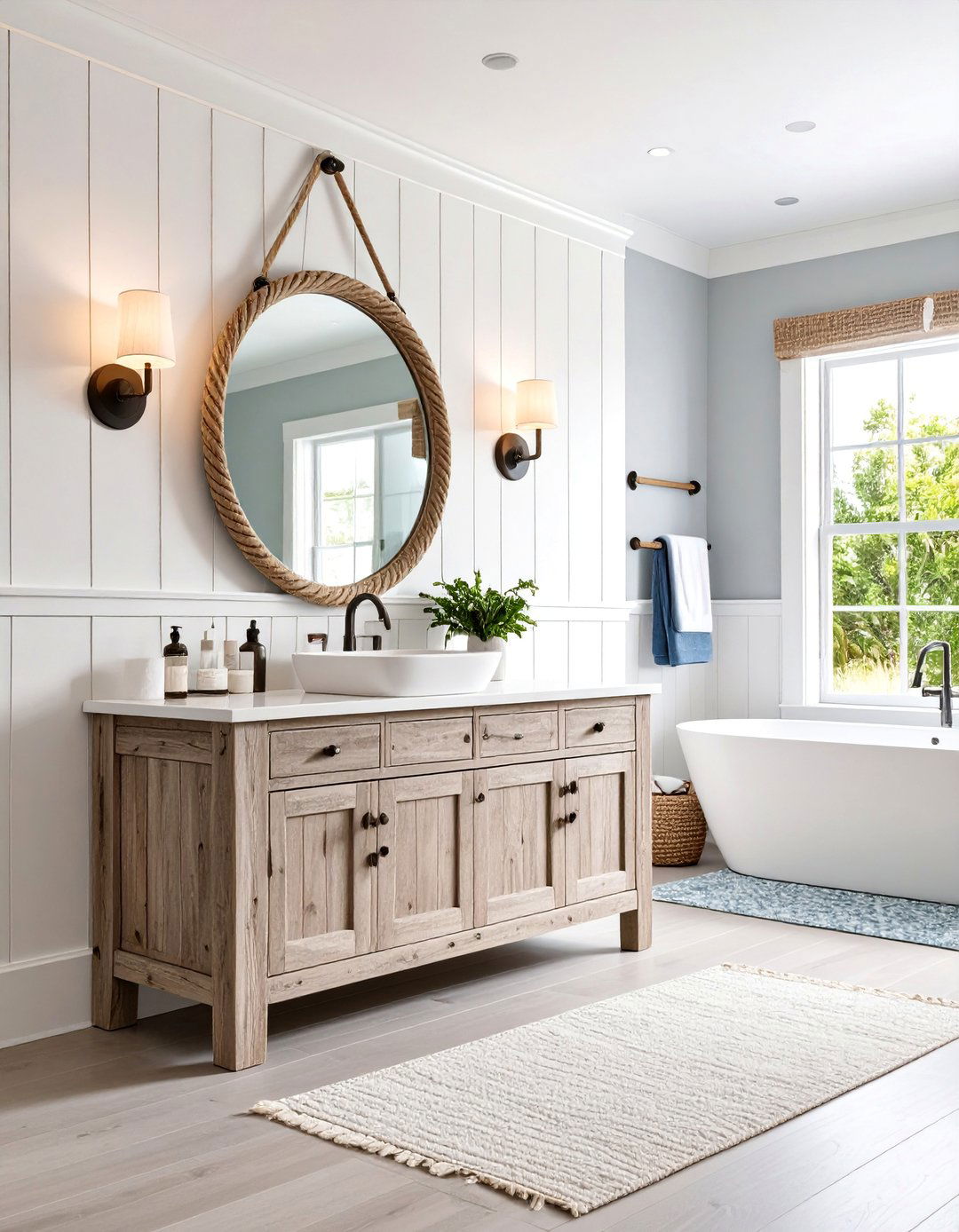
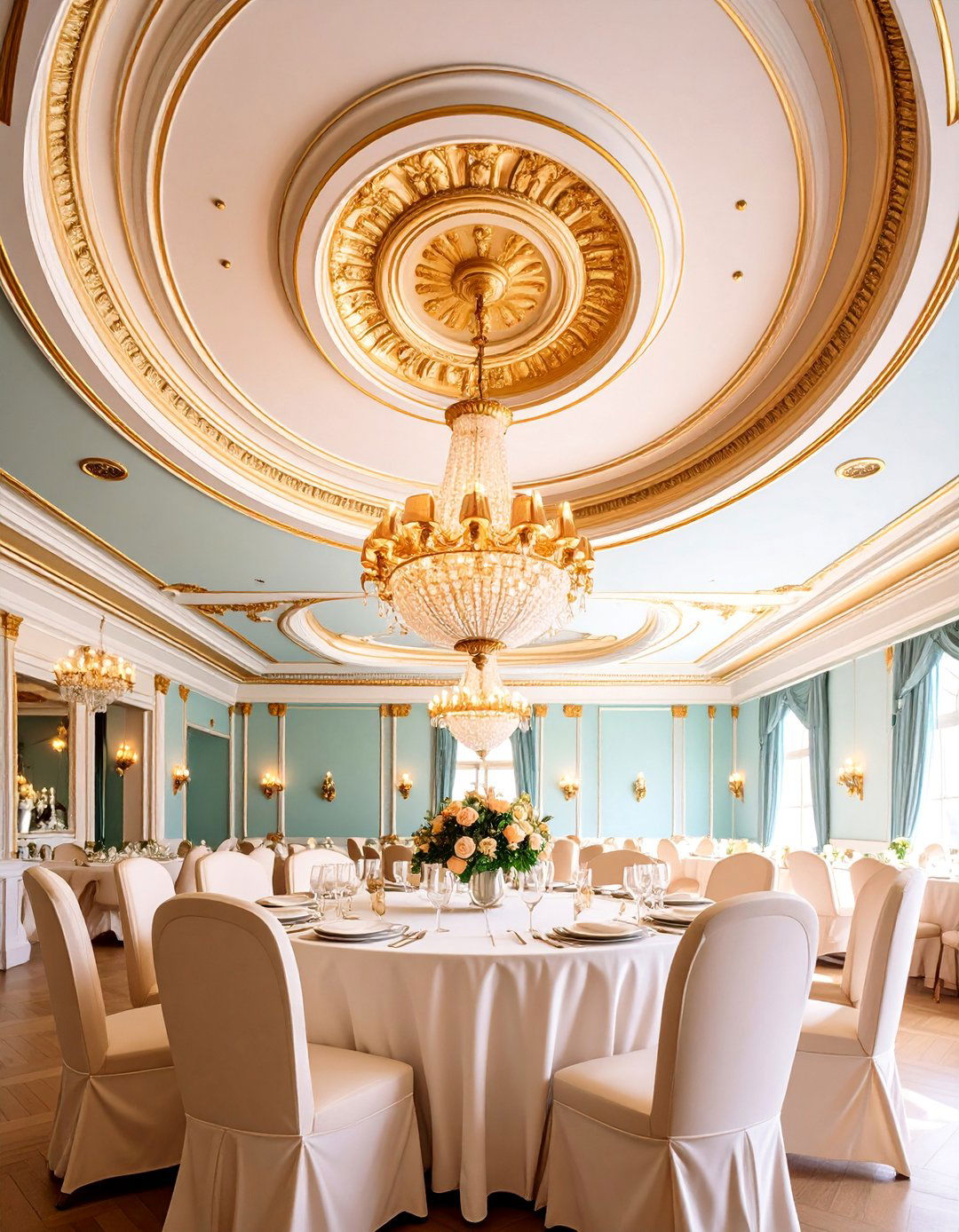
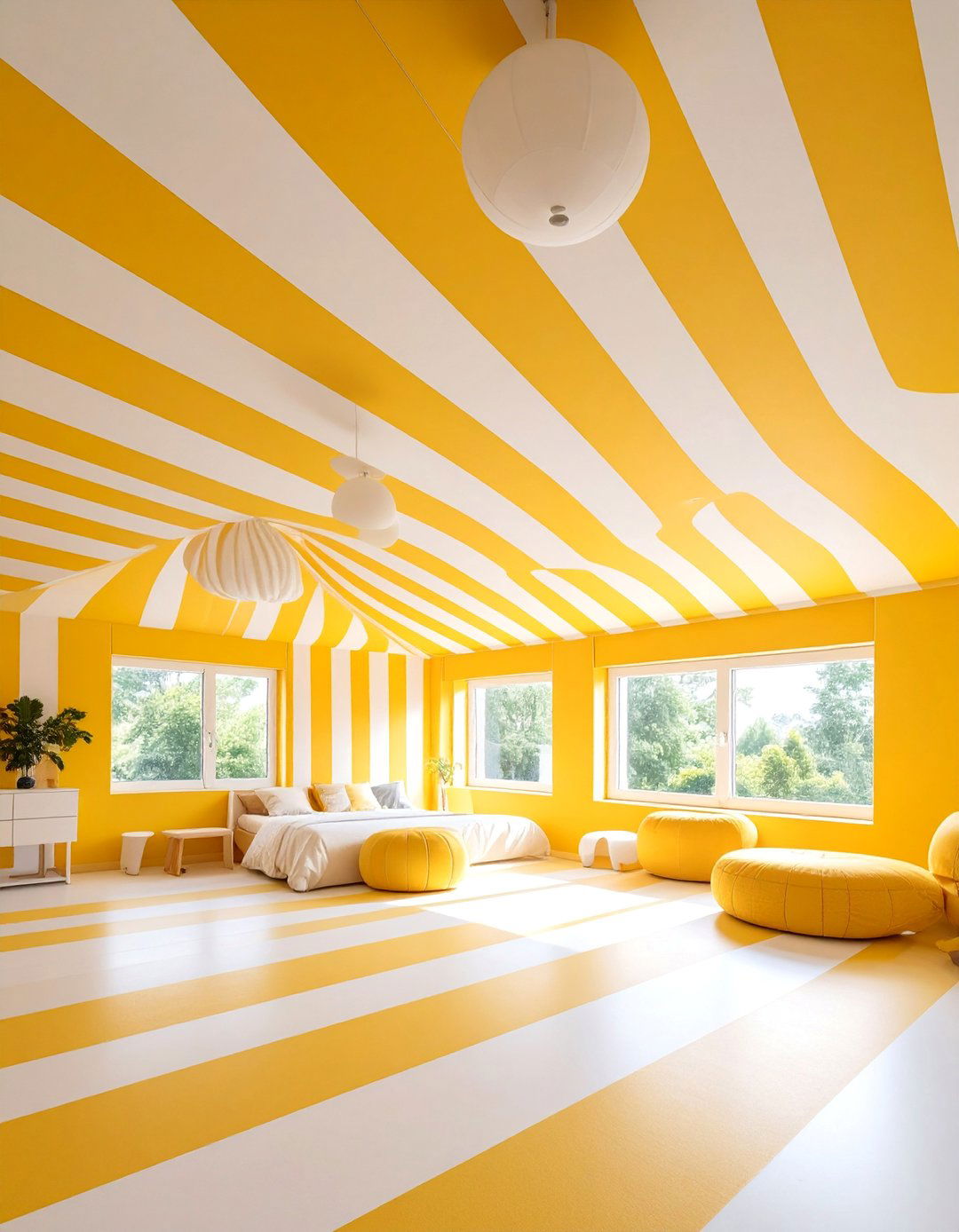

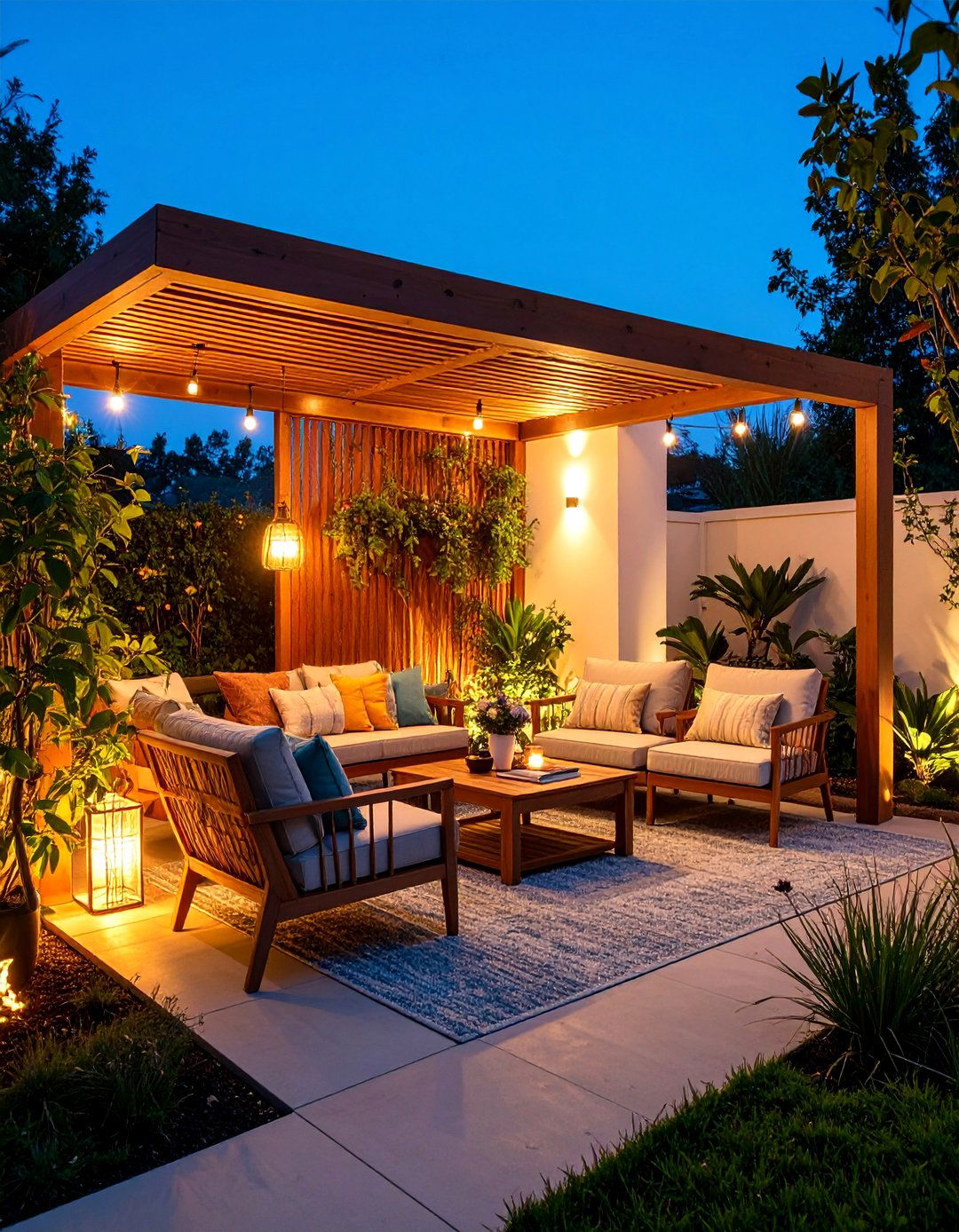
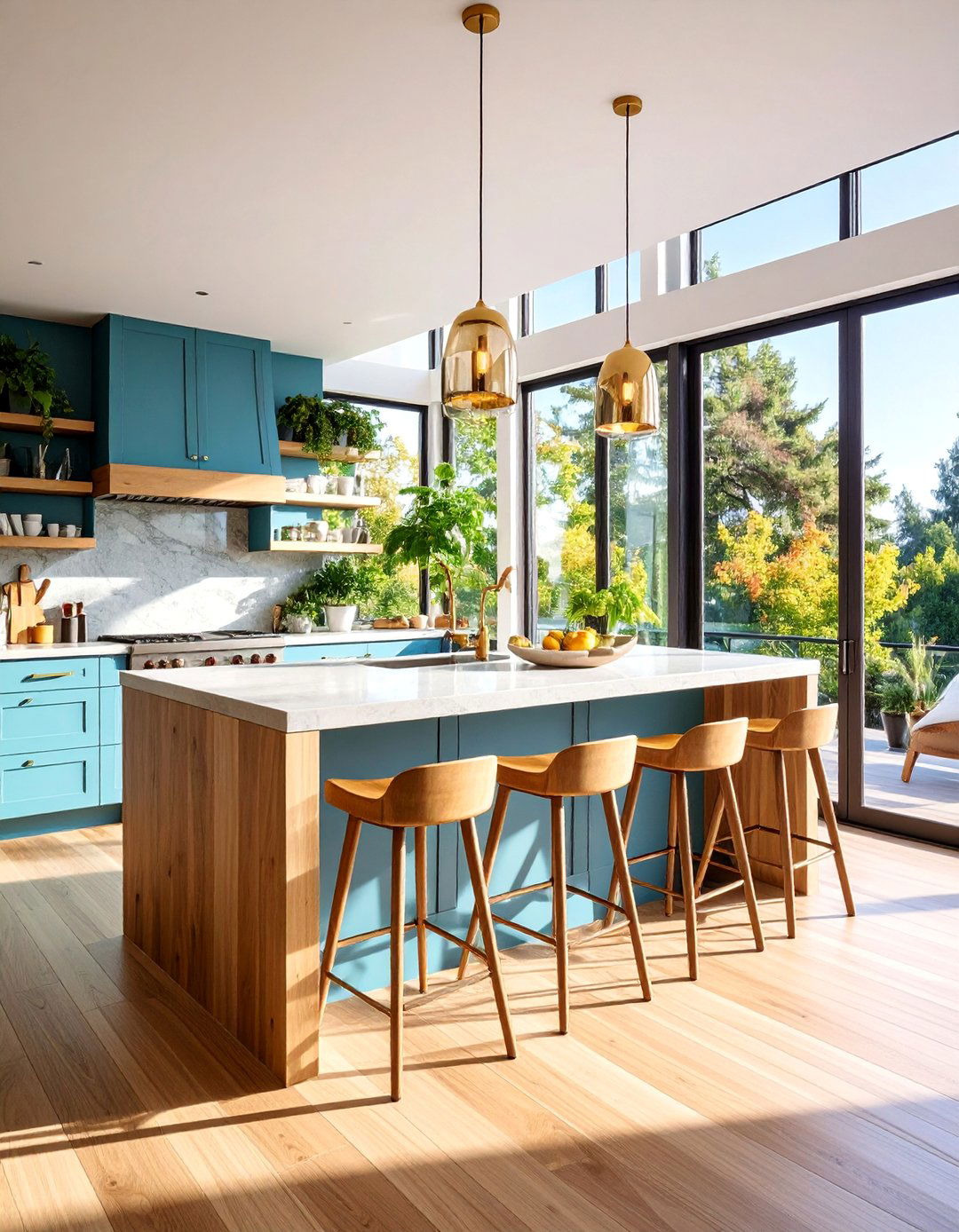
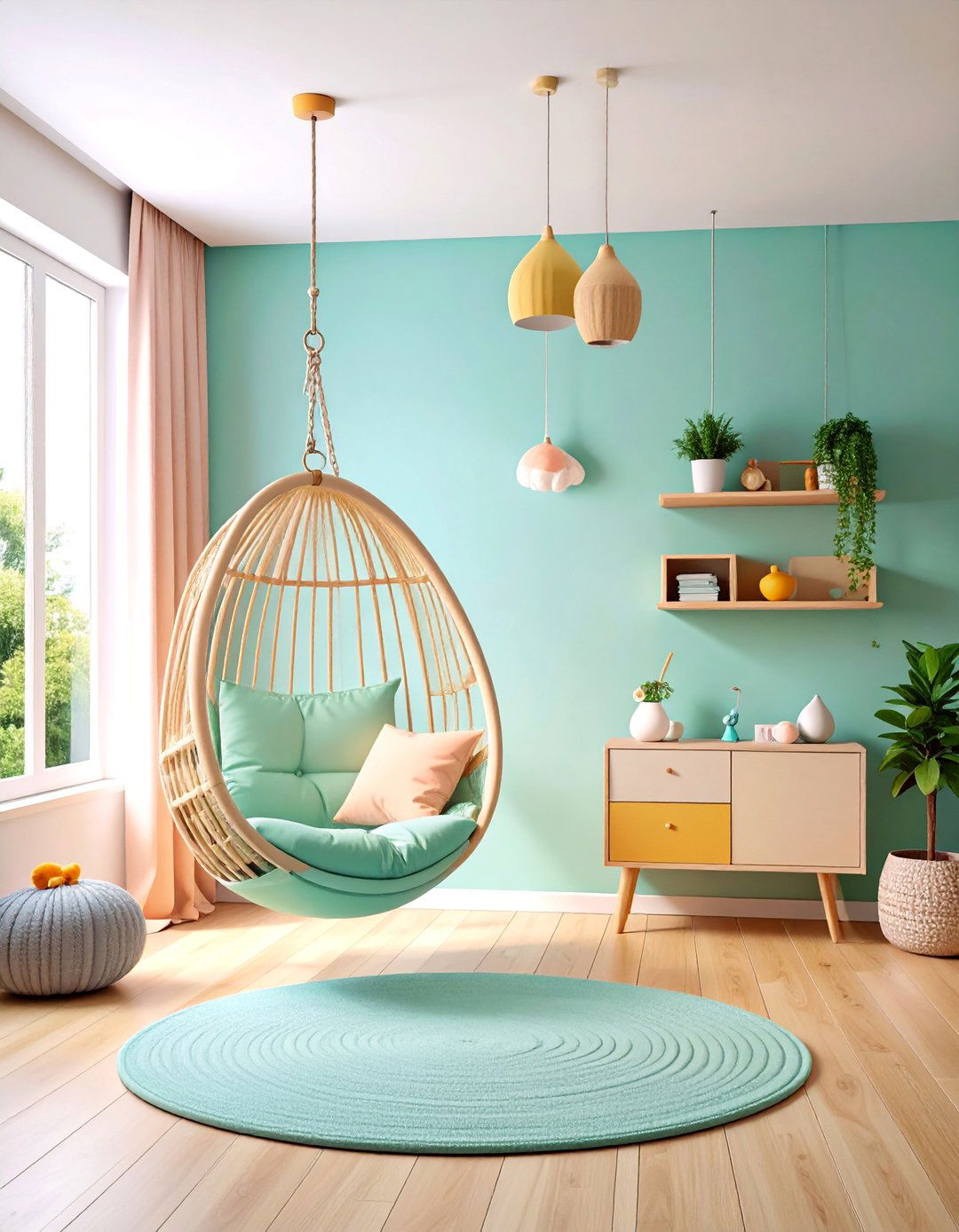




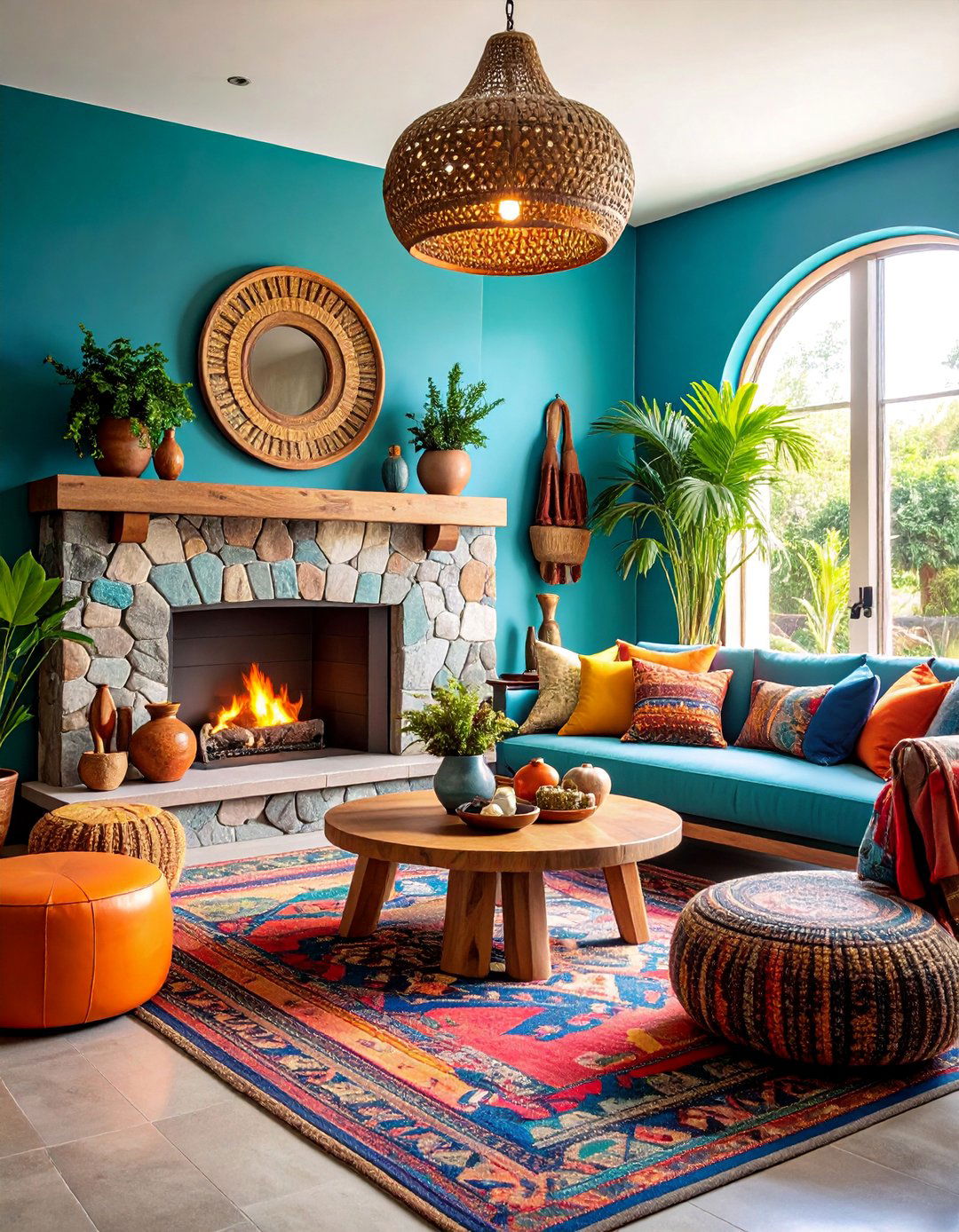

Leave a Reply